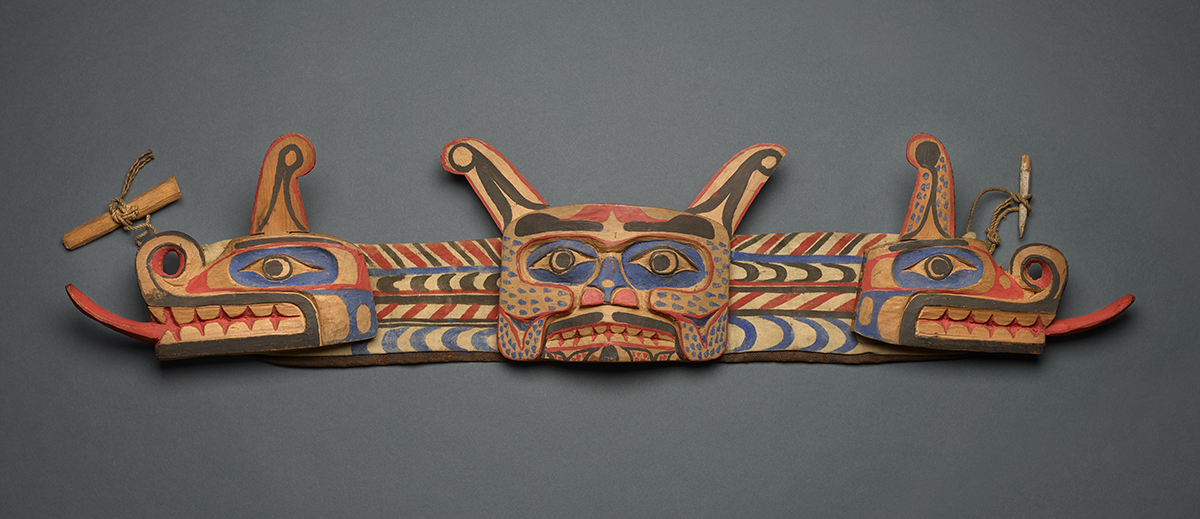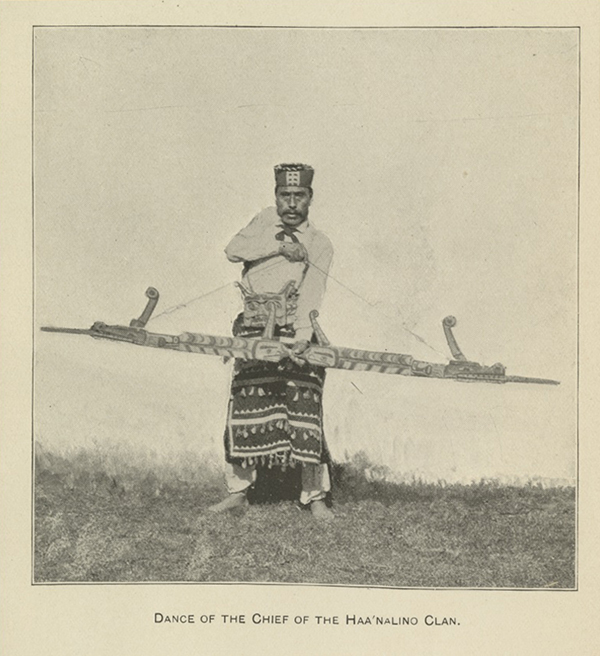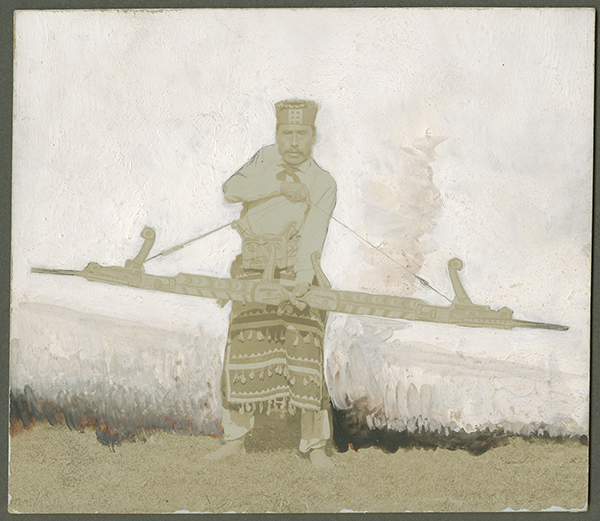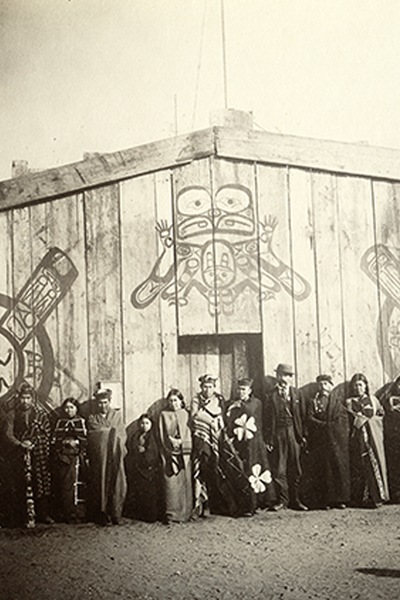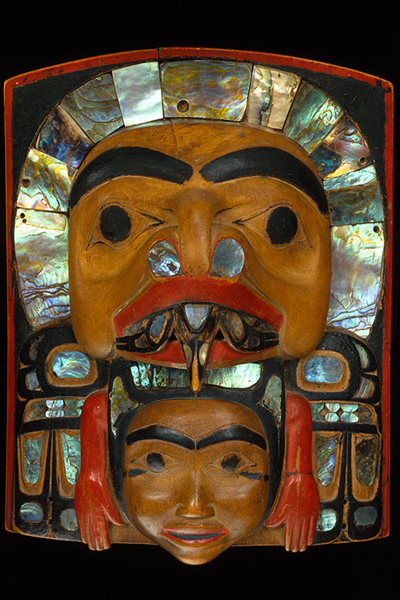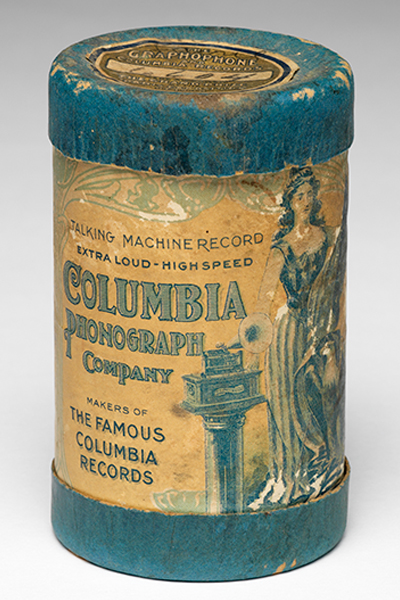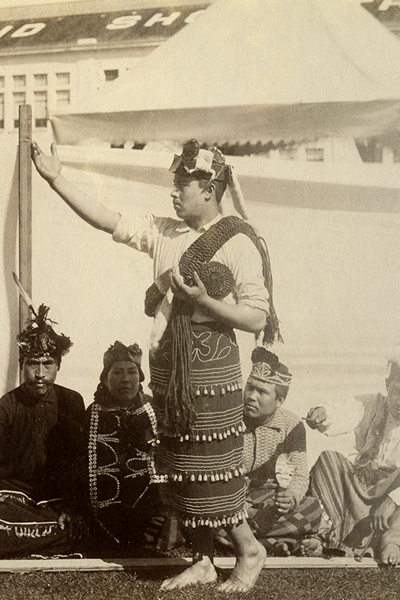CHAPTER IV: 1893 CHICAGO WORLD’S FAIR
Ceremonial Belt
Ceremonial Belt
Unknown maker, Kwakwaka’wakw
Wood, textile, paint, iron alloy, cordage
39 7/8 x 11 1/4 x 1 7/8 in. (101.3 x 28.6 x 4.8 cm)
Accessioned by the Field Columbian Museum in 1897
Field Museum 18863
Plate 15 from Boas’s 1897 book.
Hunt’s 1920s notes on plate 15:
sēsᴇyoʟ̣ łᴇk!wes
Double Head snake Bow
sełᴇx̣sdege wᴇᵋsē´gāᵋnos q!ānē´qēᵋlākw –
Double Head snake Belt on waist of
Born to face any thing Hard or toff
this man who use them is gwᴇᵋyołᴇlas
of the nᴇ´qᴇm´gᴇlī´sᴇla.
This ceremonial belt depicts a Sisiyutł, a fearsome double-headed serpent said to bestow supernatural powers on those with hereditary rights to it—and to kill those that do not.1 It is also one the most important heraldic crests of the Kwakwaka’wakw, belonging to multiple bands and ’na’mima (lineage groups). The Sisiyutł is depicted on a variety of art forms including totem poles, house fronts and beams, settees (like the one in this exhibit), bowls and spoons, masks and headdresses, clothing, and ceremonial bows and belts.2
The front of this belt features a low-relief carving, likely in red cedar, of a humanoid face bearing its teeth and surmounted by curved horns that designate supernatural beings. On either side of this face are bands of cotton fabric, painted with scalloped and hatched designs representing the skin of the Sisiyutł, which attach to horned serpent heads with extended tongues. Toggle closures are tethered to the back of both serpent heads by yarn. When worn around the waist, the human face looks forward while the two serpents face backwards (Sisiyutł headdresses often take similar form).
This belt is now in the collection of Chicago’s Field Museum, though neither Boas’s 1897 book nor the museum’s records explain exactly how it arrived there. Between 1891 and 1892, George Hunt collected over 365 Kwakwaka’wakw objects for display at the World’s Columbian Exposition, in addition to coordinating a visiting troupe.3 However, Hunt’s extant shipping lists only include one object (a “staff”) noted as depicting a Sisiyutł, and mentions no belts or bows.4 It is thus possible that the belt was brought by one of the troupe members and sold to Hunt or Boas at the fair itself. Most of the Northwest Coast items assembled before or during the Exposition were officially catalogued by the Field Museum only later, between 1895 and 1897, obscuring their conditions of acquisition in many cases. In addition, Hunt didn’t document his own collection for the fair very well, as Boas had not yet trained him to record detailed provenance for the ceremonial regalia he purchased.
Plate 15 of Boas’s book pictures the belt being worn by a dancer at the Exposition, although the fairground context was carefully removed for publication and not indicated in the caption or accompanying text (Figs. 1 and 2). In the plate, the anonymous dancer is staring intently into the camera while pulling taut the string on a long Sisiyutł bow.5 Boas used the altered photograph to illustrate how the ceremonial crests and regalia worn by chiefs reference ancestral narratives of particular lineages, in this case the “Haa’naLeno clan,” according to the picture caption. Hunt’s notes from the 1920s reveal that the dancer’s name was G̱wayułalas, who was connected to the Ha’anadłeno ’na’mima with rights to the specific hereditary regalia he wore, and who died (possibly from the measles) shortly after returning to Vancouver Island from Chicago.6
Fig. 1. G̱wayułalas performing a dance at the World’s Columbian Exposition, Chicago, 1893. Seated behind him, left to right: Xwani, Tom Hemasi’lakw, Hixhaisagami, Exu’las(?), Chicago Jim(?), Iwanuxwdzi, John Wanukw. Detail of photograph by John H. Grabill. Courtesy of the Peabody Museum of Archaeology and Ethnology, Harvard University, PM # 93-1-10/100266.1.35.
Fig. 2. This hand-painted print was the basis for the book’s Plate 15. National Anthropological Archives, Smithsonian Institution, INV 000697.00 SPC.
By Leela Outcalt and Aaron Glass
PAGES IN THIS CHAPTER
- Jonaitis, Chiefly Feasts, 90; “Education: Sisiyutł,” Living Tradition: The Kwakwaka’wakw Potlatch on the Northwest Coast. Virtual Museum of Canada/U’mista Cultural Centre (https://umistapotlatch.ca/enseignants-education/cours_7-lesson_7-eng.php).
- Boas pictured other Sisiyutł belts in The Social Organization, 370, 514.
- Cole, Captured Heritage, 124.
- Hunt, “Shipping list,” 2.
- The Sisiyutł bow pictured in Plate 15 is also at the Field Museum (18856).
- Judith Berman, personal communication. Chief Mungo Martin had also identified Gwayułalas in this photo around 1960 (Bill Holm, personal communication).

